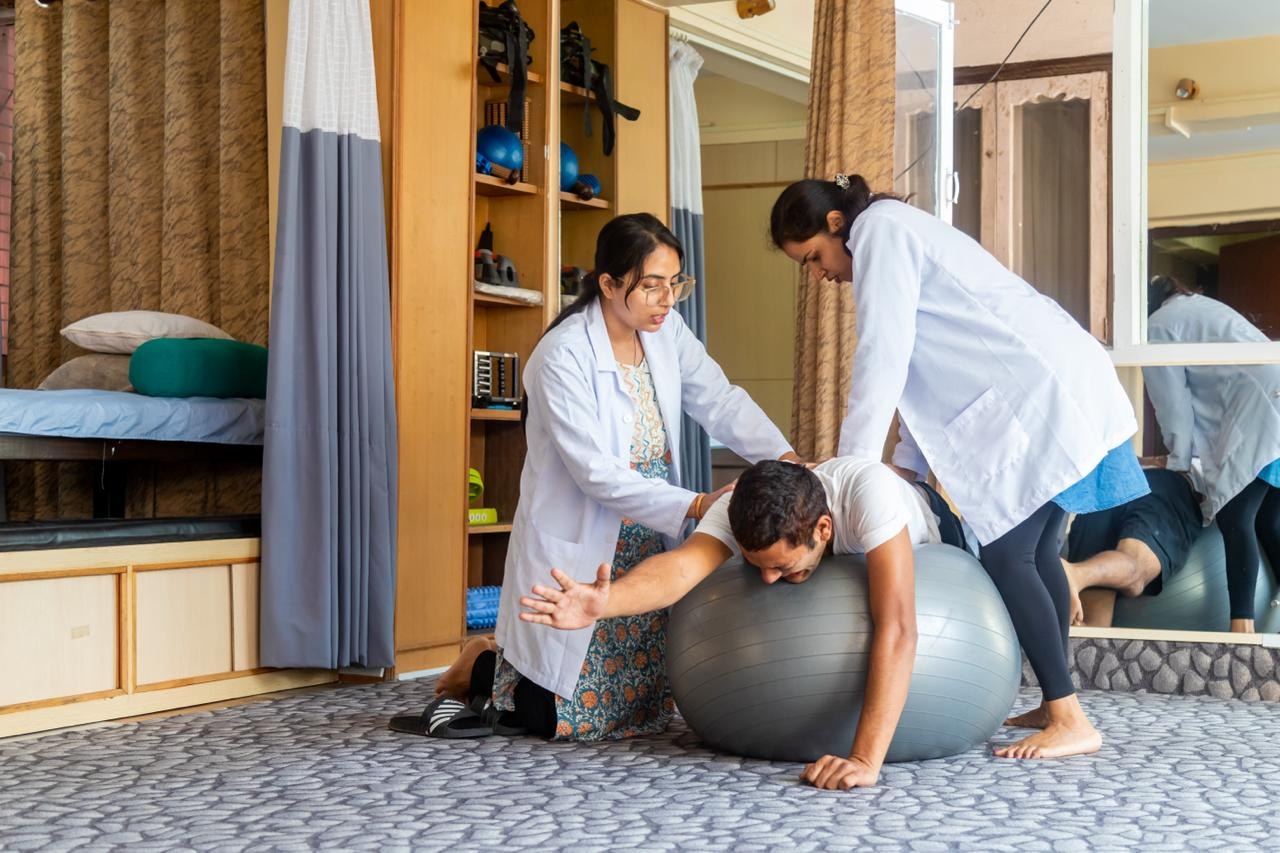Explore Our
Discover the latest insights and tips on physiotherapy, wellness, and health.
Discover the latest insights and tips on physiotherapy, wellness, and health.

In today’s world, being physically fit is not just about spending hours in the gym or following strict cardio regimens. It’s about being able to carry out everyday tasks efficiently, without pain or discomfort, and preventing injuries. This is where functional training comes into play. Rooted in the principles of physiotherapy, functional training focuses on improving the body's ability to perform natural movements, which translates directly to real-life activities. This blog post explores the relationship between physiotherapy and functional training and how functional exercises can enhance our daily lives.
Physiotherapy, also known as physical therapy, is a healthcare practice focused on improving movement, physical ability, and overall well-being through treatment and rehabilitation. Physiotherapists help people with muscle, joint, and nerve conditions. They evaluate patients, identify their problems, and provide treatment using exercises, hands-on techniques, and other methods to restore movement and function.
Essentially, physiotherapy aims to improve how people move. It helps individuals recover from injuries or manage long-term pain, enabling them to perform daily activities. These activities can be simple, like walking or climbing stairs, or more complex, like squatting and lifting.
Functional training is strongly influenced by physiotherapy principles. However, it's not just for people recovering from injuries or managing pain. It's also for anyone who wants to improve their physical fitness. The goal is to enhance strength, balance, stability, and mobility for everyday movements.
Functional training is a method of training that aims to improve your ability to perform everyday activities. It focuses on exercises that mimic real-life movements, which are often multi-joint and multi-muscle in nature. The goal is to train your body to move efficiently and safely, using natural patterns that our bodies perform every day.
Traditional gym exercises tend to isolate specific muscles or joints, often using machines. Functional training, on the other hand, focuses on compound movements that activate multiple muscle groups at the same time. These exercises replicate the motions we make during everyday activities, ensuring that our body becomes more functional in a holistic way.
For example, lifting a heavy box from the ground requires not only strength but also balance, coordination, and core stability. Functional exercises like deadlifts, squats, and lunges target all the muscles involved in such activities, improving your strength and movement efficiency.
One of the core principles of functional training is the concept of specificity. This principle holds that the body adapts to the specific demands placed upon it. In simpler terms, to improve a particular movement or skill, you need to practice exercises that closely resemble that movement. This is a principle commonly used in physiotherapy, where exercises are tailored to help a patient regain the ability to perform certain movements.
For instance, someone recovering from knee surgery may struggle with activities like climbing stairs. A physiotherapist would incorporate exercises into their rehabilitation plan that mimic this motion, such as step-ups or lunges, to strengthen the muscles involved in stair climbing. The same concept applies in functional training; the exercises you choose should closely mimic the movements required for real-life tasks.
Another key aspect of functional training is the integration of multiple muscle groups. Unlike isolation exercises, which target specific muscles in isolation, functional movements involve coordination between different muscle groups working together. This approach improves overall body strength, balance, and flexibility, which makes performing real-world tasks like picking up groceries, carrying a child, or lifting objects from a shelf easier and safer.
One of the primary benefits of functional training is its ability to enhance real-life movement. Whether you are lifting a bag of groceries, playing sports, or simply bending over to tie your shoes, functional exercises improve your body’s ability to perform these movements efficiently and without strain.
One of the most basic yet essential real-life movements is lifting. Lifting heavy objects, whether it’s a box, a bag of groceries, or a piece of furniture, can lead to injury if done improperly. Functional training exercises such as dead lifts, squats, and kettle bell swings mimic the motion of bending and lifting. These exercises help strengthen the muscles in the legs, back, and core, enabling you to lift and carry objects safely with the proper technique.
Another common task is climbing stairs. Many people take this simple activity for granted, but for some, it can be challenging due to weak leg muscles or poor balance. Functional training exercises like step-ups, lunges, and calf raises help build strength in the legs and improve coordination. These exercises not only make climbing stairs easier but also enhance your ability to navigate other types of inclines.
Reaching for items on high shelves or bending down to pick something up from the ground requires flexibility, strength, and stability. Functional training exercises that involve overhead presses, shoulder raises, and rotational movements help improve shoulder mobility and core stability, making it easier to perform these types of movements without straining the back or shoulders.
Walking and running are fundamental movements we engage in regularly, whether we’re heading to work or exercising. Functional training improves gait, posture, and coordination, all of which help with efficiency when walking or running. In addition, exercises that strengthen the hips, legs, and core help reduce the risk of falls and injuries while enhancing overall endurance and performance.
Simple tasks like standing on one leg, carrying a child, or maintaining stability while lifting require good balance. Functional training often includes balance drills such as single-leg dead lifts, stability ball exercises, and balance board routines. These exercises help train the body to maintain stability, which reduces the likelihood of falls and improves overall coordination.
One of the most significant benefits of functional training is its ability to prevent injuries. By training the body to perform natural movements in a controlled environment, you reduce the risk of sprains, strains, and other common injuries. Strengthening the muscles that support joints, such as the knees and shoulders, can protect you from overexertion and poor form during everyday tasks.
Functional training helps build strength in all of the muscles required for daily activities. It’s not just about lifting heavier weights in the gym but about being able to perform tasks without fatigue. This leads to greater endurance for carrying groceries, doing housework, or playing sports.
Functional training helps to improve posture by strengthening the core muscles, which are essential for maintaining an upright position. In addition, balance training enhances coordination and stability, which can help prevent falls and improve movement efficiency.
When you incorporate functional training into your routine, you’ll notice improvements in your ability to perform daily tasks. You’ll feel more confident doing activities that require strength, flexibility, and coordination. The sense of achievement and overall improvement in physical function leads to a better quality of life, both physically and mentally.
Functional training makes everyday activities easier by building strength, improving agility, and teaching efficient movement. This helps prevent injuries and boosts your overall health. It's great for recovering from injuries, avoiding new ones, and improving your general fitness.


